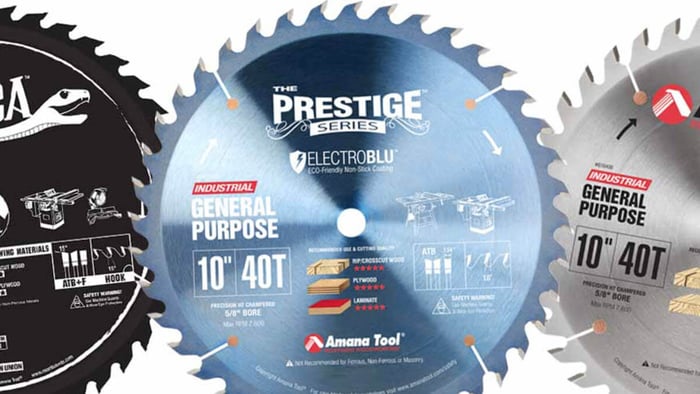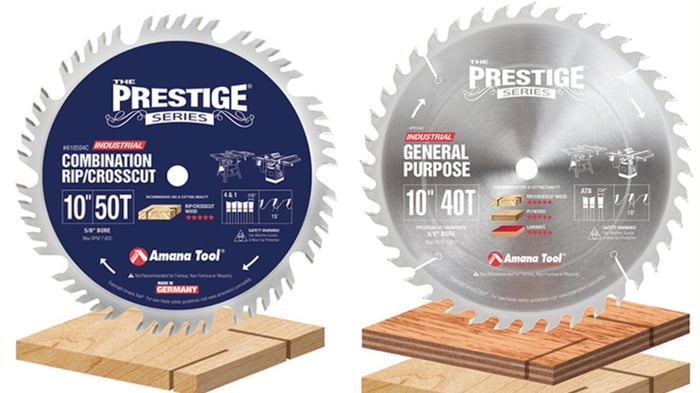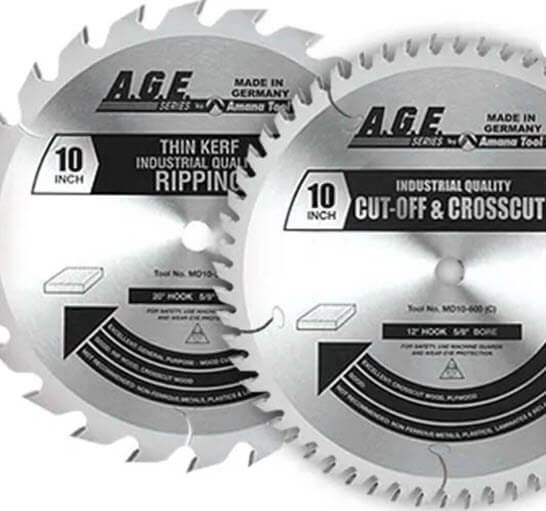
Table Saw Blades 101: Find the Perfect Blade for Every Cut
Enhance the quality of your woodworking projects by understanding table saw blades to achieve accurate and neat cuts.
This article delves into the types of table saw blades, their key components, and crucial features to consider. We'll also explore factors to consider when selecting a table saw blade, such as material, size, teeth count, budget, and durability.
Get ready for valuable tips on choosing the most suitable blade for your project and maintaining its longevity.
Understanding Table Saw Blades
Whether you’re a professional or a DIY enthusiast, knowing your table saw blades can significantly improve your cuts.
Types of Table Saw Blades
Table saw blades vary by material and cutting technique.
For crosscutting, choose a high tooth count blade with an alternate top bevel (ATB) design for smooth cuts.
For rip cuts, opt for fewer teeth and a flat top grind (FTG) for efficient material removal.
A combination saw blade is designed to perform both ripping (cutting along the grain) and cross-cutting (cutting across the grain) tasks reasonably well, though it may not excel in either task as well as a dedicated ripping or crosscut blade would.
Composite materials like laminate or MDF need carbide-tipped blades for durability and precision. Specialized blades for hardwood, softwood, and plywood are designed for optimal performance with each material.
Prestige 10 Inch Diameter, 40T ATB, 18 Deg, 5/8 Bore, General Purpose Saw Blade features a massive tool-steel plate (.102" thick!) with expansion slots and copper plugs that practically eliminate vibration. General-purpose blades are not exactly the same as combination blades, although people often use the terms interchangeably. A general-purpose blade can perform both rip and cross-cutting, but it can also handle other tasks like cutting plywood or laminated wood.
Key Components and Features
Consider diameter, thickness, tooth count, TPI, RPM, and arbor size when selecting a blade. Tooth configuration affects cut quality, with carbide and high-speed steel being common materials. Carbide offers durability, while high-speed steel provides exceptional cutting. Coatings like TiCo™ and Perma-Shield™ reduce friction and heat, enhancing blade life. Anti-vibration technologies minimize noise and vibration, leading to smoother cuts and improved comfort.
Factors to Consider When Choosing a Table Saw Blade
Understand several factors to choose the ideal blade: compatibility with your saw, desired performance, quality features, project requirements, cutting precision, and safety.
Material and Cut Type
Match the blade to the material—wood, composite materials, or specific cuts like crosscuts and rip cuts. Different materials interact uniquely with blades. For dense hardwoods, use a blade with more teeth to prevent chipping. For laminate, use a blade engineered for clean cuts. Matching the blade to the material ensures professional results.

Timberline No Melt Plastic Cutting Saw Blade produces less heat than a standard blade, leaving a crisp, smooth edge.
Size and Teeth Count
Blade size and tooth count impact cutting accuracy and efficiency. More teeth are ideal for finer cuts, while fewer teeth suit faster, rougher cuts. Tooth configuration, like ATB or triple chip grind (TCG), affects cut quality. Kerf, arbor size, and RPM ensure proper clearance, stability, and cutting speed.
Budget and Durability
Balance your budget with blade quality. Top-rated blades, online reviews, and user recommendations can guide you. Find a blade offering affordability and durability. User feedback provides insights into performance and lifespan. Research to discover a dependable and cost-effective table saw blade.
How to Select the Right Table Saw Blade for Your Project
Follow a blade selection guide to match your project requirements, ensuring you use the necessary tools for the best results.
Matching the Blade to Your Project
Assess material, cut type, and performance. Blade material affects durability, sharpness, and wear resistance, impacting cut precision. Cut type influences blade choice—rip cutting, crosscutting, or both. Consider speed, accuracy, and smoothness to achieve desired results.
Tips for Blade Maintenance and Longevity
Proper maintenance ensures longevity, durability, and precision, and upholds safety standards.
- Clean the blade after each use to prevent pitch and resin buildup.
- Inspect for damage like dullness, chipping, or warping, and address promptly.
- Use the appropriate blade for the material to prolong its lifespan and maintain cutting precision.
Prioritize safety when handling and maintaining blades.
Final Thoughts and Recommendations
When choosing a table saw blade, consider technical specifications, expert advice, user recommendations, and top-rated brands for best performance and quality. Expert advice provides valuable insights, while user feedback offers firsthand experiences. Top-rated brands ensure consistency and advanced engineering for maximum performance. Prioritize quality over price for the best woodworking results.

Frequently Asked Questions
What's the difference between a thin kerf and a full kerf blade?
Thin kerf blades are about 3/32" thick, reducing material waste and requiring less power, ideal for underpowered saws. Full kerf blades are 1/8" thick, providing more stability and smoother cuts, suitable for powerful saws.
How many teeth should my table saw blade have?
The number of teeth depends on the cut type. For ripping, 24-30 teeth are ideal. For crosscutting, 60-80 teeth provide smooth cuts. A 40-50 tooth combination blade can handle both tasks reasonably well.
Can I use the same blade for ripping and crosscutting?
A combination blade with 40-50 teeth can perform both ripping and crosscutting. However, for optimal results, use a dedicated blade for each type of cut.
What materials do different blade types work best with?
Carbide-tipped blades are versatile for wood, laminate, and MDF. High-speed steel blades are good for softwood and plywood. Specialty blades are available for metal and plastic cutting.
How often should I replace my table saw blade?
Replace your blade when it becomes dull, chipped, or warped, affecting cut quality. With regular use, carbide-tipped blades can last 1-2 years. Inspect and maintain blades regularly to extend their lifespan.









